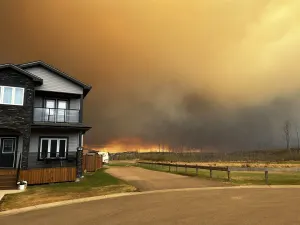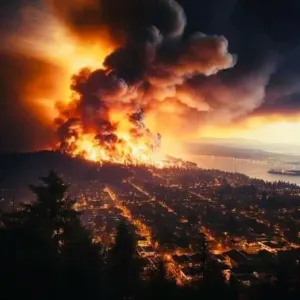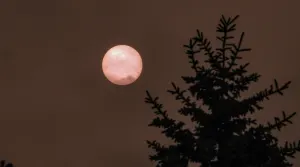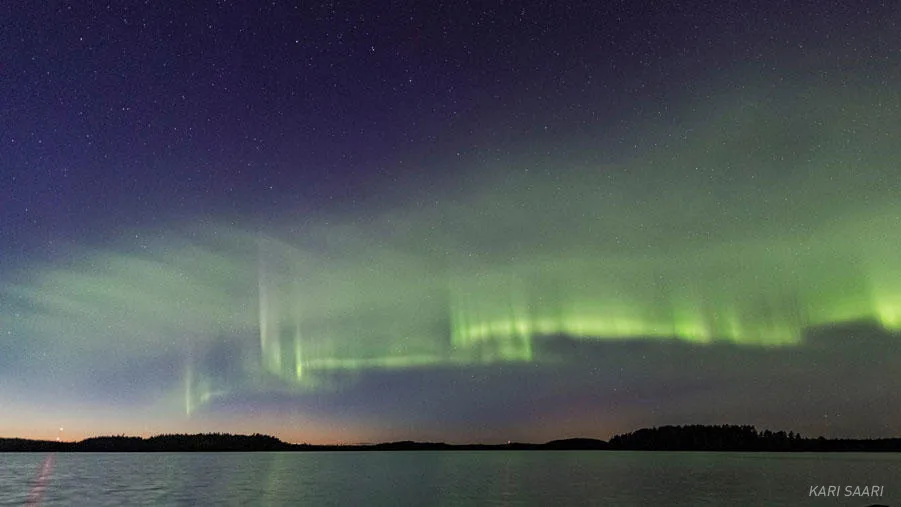
Aurora chasers find new type of Northern Lights, previously unknown to science
A new type of Aurora Borealis has been linked to disturbances in the atmosphere
Aurora chasers regularly share amazing views of the Northern Lights, but at times they are also at the forefront of scientific discovery, as their cameras capture things that scientists have never seen before. Now, they have helped scientists discover a new form of aurora known as 'dunes'.
The Northern Lights show up in many forms - arcs, bands, rays, coronas, patches and even pillars. There's even STEVE (Sudden Thermal Emission Velocity Enhancement), a strange kind of aurora hybrid spotted by aurora chasers in western Canada.
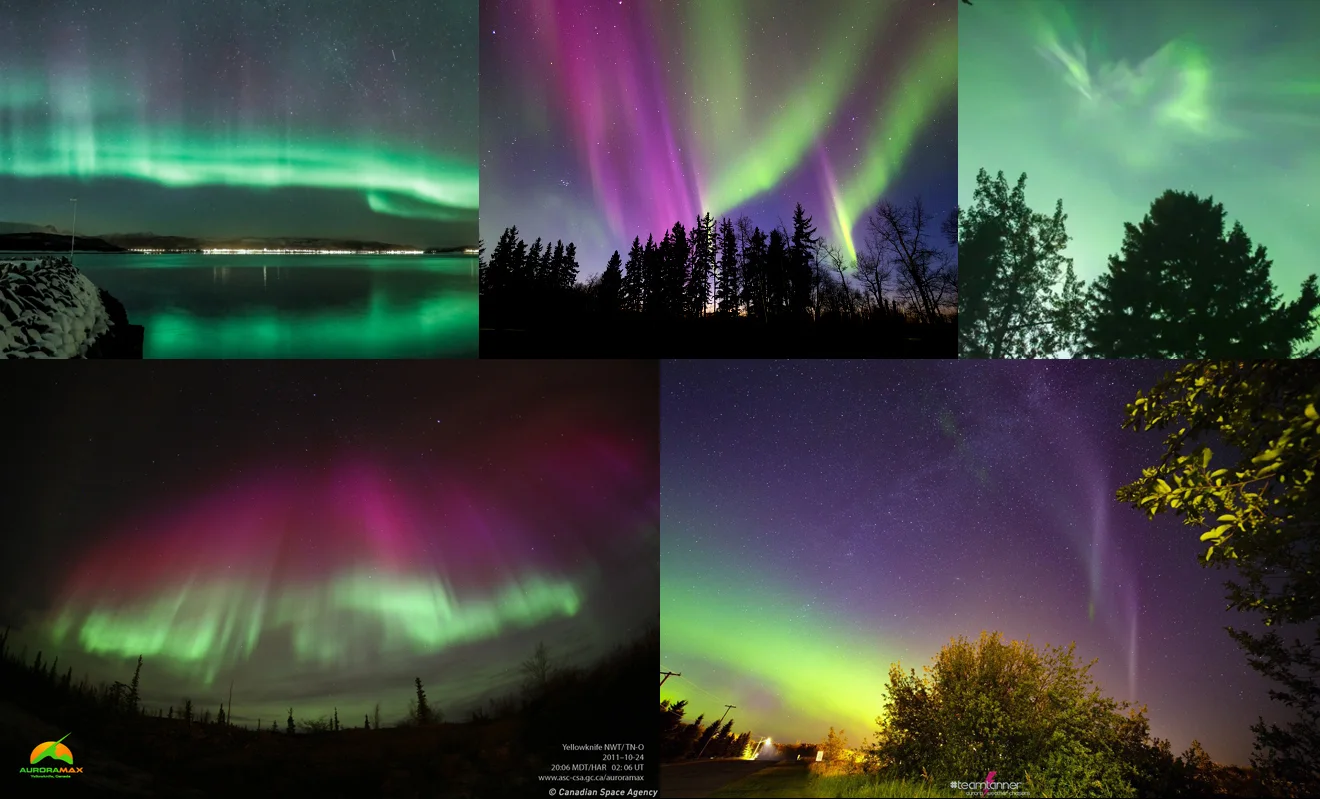
Aurora types. Top row, left to right: Arcs and pillars (Tobias Bjørkli/PIXELS), Bands and rays (GETTY), Corona (CBC). Bottom row, left to right: Rays and Pillars (AuroraMax/CSA), Patches and STEVE (Team Tanner)
Sometimes, photographers capture something that doesn't fit into any of these categories, though. This is what happened with Finnish amateur aurora watchers on the night of October 7, 2018, when they spotted something new - auroral 'dunes'.
Based on images and video taken on that night, the aurora was showing up as vibrant green arcs and bands, mixed with rays and pillars. There was another type of aurora that appeared, however, which looked like undulating waves or sand dunes.
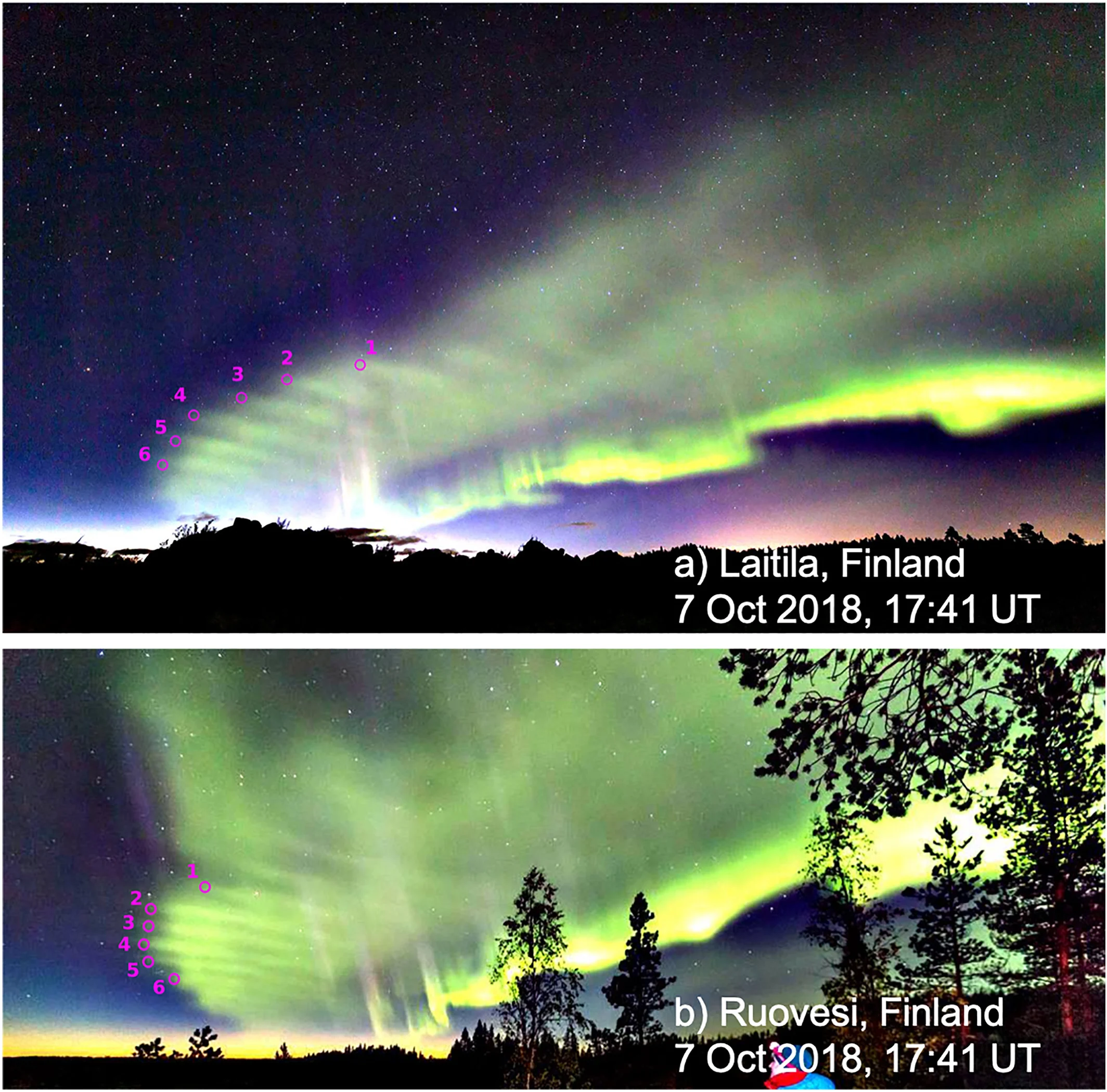
This new type of aurora, called 'dunes' was seen many times before, but has now been scientifically classified. The dunes (marked by magenta circles and numbers, which help in mapping them) extend equatorward from the discrete bright arc in the north. Photo Credits: Palmroth M., Grandin M., Helin M., Koski P., Oksanen A., Glad M. A., et al. (2020).
Wanting to show these photographs to scientists, they contacting Minna Palmroth, a Professor of Computational Space Physics at the University of Helsinki. Palmroth leads a research group developing the world's most accurate simulation of the near-Earth space and space weather conditions that produce auroras.
Palmorth had seen this form of aurora before but had no explanation for it. Now, seeing this phenomenon in motion, she and her research group set to work figuring out exactly where it was taking place, and what could be behind its appearance.
Using the different views of these dunes from different locations, they determined they were showing up between 80-100 kilometres above the ground, just below the mesopause.
"Due to the difficulties in measuring the atmospheric phenomena occurring between 80 and 120 kilometres in altitude, we sometimes call this area 'the ignorosphere'," Palmorth said in a University of Helisinki news release.
The mesopause is a region of the atmosphere at the top of the mesosphere (where temperatures go down with height), which represents where conditions abruptly change to those of the thermosphere (where temperatures rise with height).
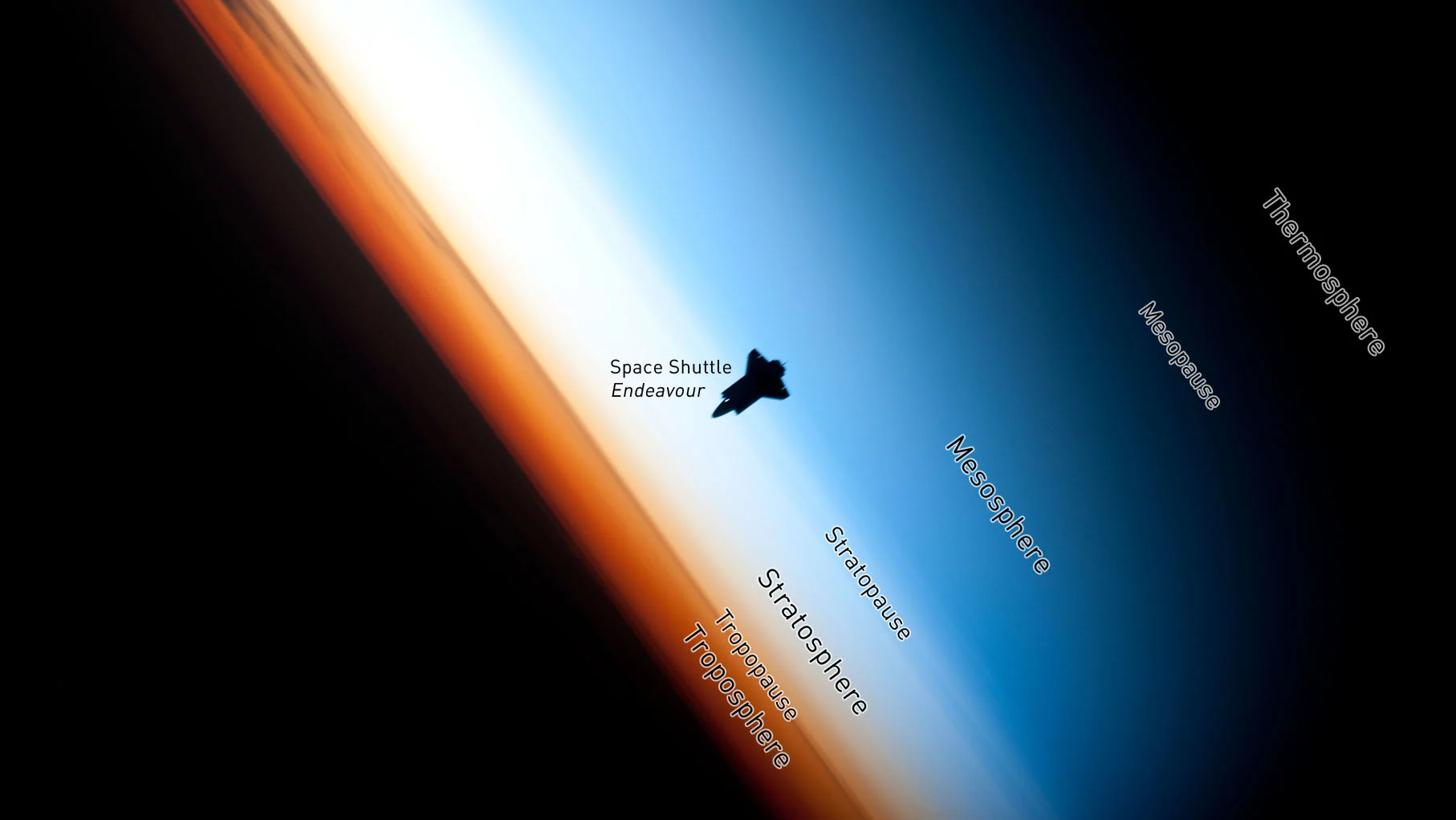
This image from the ISS of Space Shuttle Endeavour, taken during STS-130/Expedition 22 on Feb 9, 2010, reveals the different layers of the atmosphere. Credit: NASA/Scott Sutherland
As for what could be causing these dunes, Palmroth's team found they could be explained by a combination of two atmospheric phenomena - a gravity wave and a temperature inversion - that results in a rare 'mesospheric bore'.
Gravity waves are ripples in the air, caused by frontal systems or as winds flow over terrain features like mountains. As these ripples propagate downwind, they produce rippled cloud features, as water vapour condenses into cloud droplets on the rising part of the waves and those droplets then evaporate on the sinking part of the waves. Gravity waves can also rise upward from the troposphere, through the stratosphere and into the mesosphere.
Temperatures fall with height as you travel from the bottom to the top of the mesosphere, which helps air from below to rise. Still, there are times when a localized 'inversion layer' can develop, where temperatures instead rise with height. This is especially possible when auroras are present, as most of the energy emitted by auroras is heat, rather than light.
When a rising gravity wave encounters one of these inversion layers at the top of the mesosphere, the waves become trapped in that layer and propagate horizontally instead of vertically. These horizontally-propagating waves, along the base of the mesopause, form a mesospheric bore.
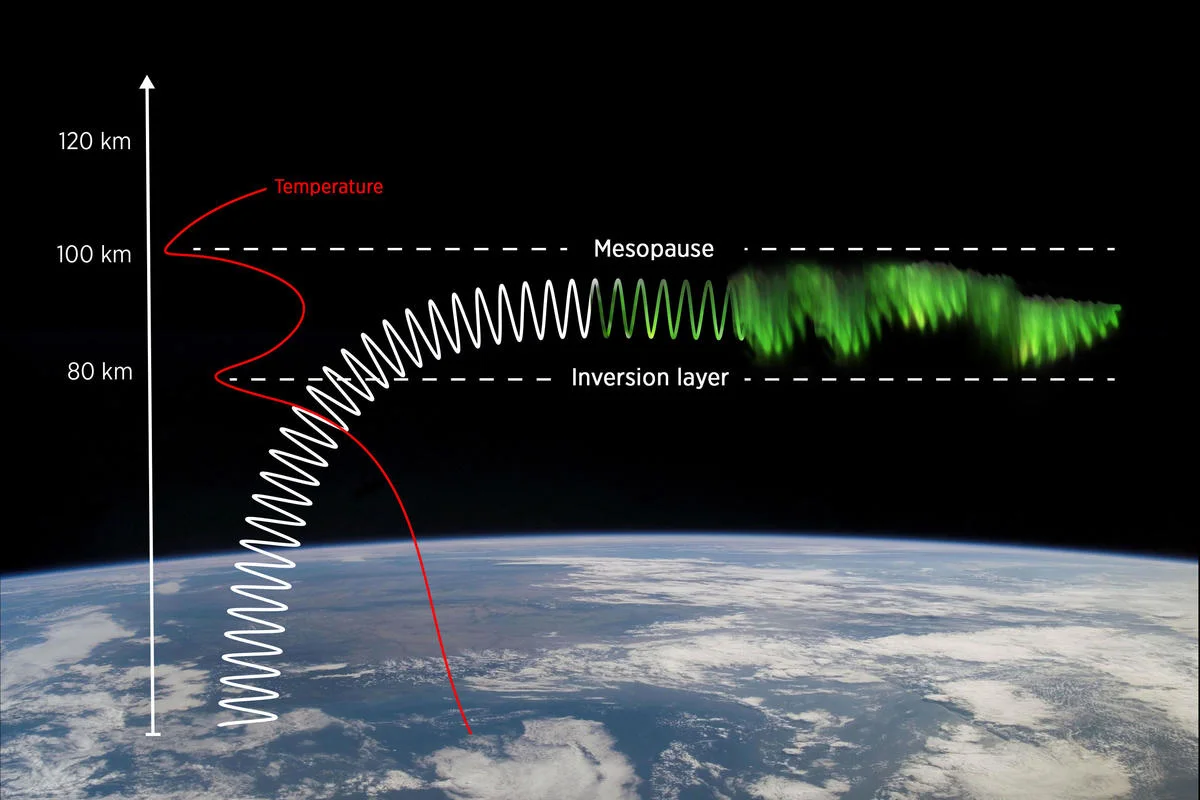
This drawing shows how the gravity wave transitions into a mesospheric bore in the mesopause inversion layer, and then lights up to become auroral dunes. Credit: Jani Närhi
Gravity waves in the troposphere produce rippling effects in high-altitude clouds. At the top of the mesosphere, though, there is very little water vapour to produce clouds.
The waves propagating along the mesospheric bore, instead, encounter the rain of charged particles from the solar wind that is responsible for causing auroras, and this causes the ripples themselves to glow.

Auroral Dunes, as seen from Savojärvi, Finland on October 7, 2018. Credit: Kari Saari
WHAT IS SPACE WEATHER?
The Aurora Borealis and its southern counterpart, the Aurora Australis, are a type of 'space weather'. Space weather includes phenomena such as sunspots, solar flares, the solar wind and solar storms (coronal mass ejections). Here at Earth, it also includes geomagnetic storms and auroras.
Auroras begin with charged particles from the Sun flowing past Earth, either as part of the flow of the solar wind or in giant magnetized clouds called solar storms.
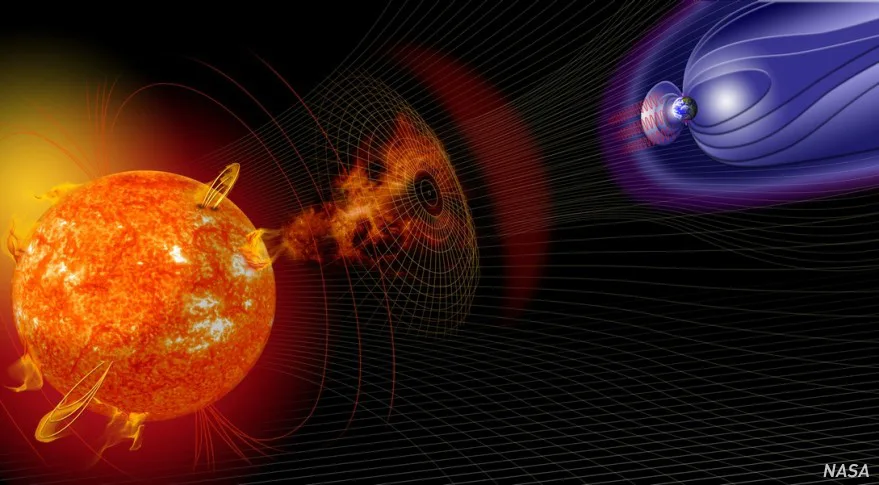
This graphic condenses the many aspects of space weather. Credit: NASA
Some of these particles get caught up by Earth's magnetic field, and they stream down into the upper atmosphere near the poles. There, these high-energy charged particles strike atoms and molecules of nitrogen, oxygen and other atmospheric gases, energizing them. To get out of that excited state, those atoms and molecules dump that extra energy as flashes of light, producing the glowing auroras in the sky.
The different colours of the auroras are due to the different atoms and molecules emitting different wavelengths of light when they dump their excess energy. The aurora shapes, on the other hand, are a result of the atoms and molecules in the air flowing around due to wind patterns.
Sources: University of Helsinki | AGU Advances (open-access journal article) | NOAA | NASA







